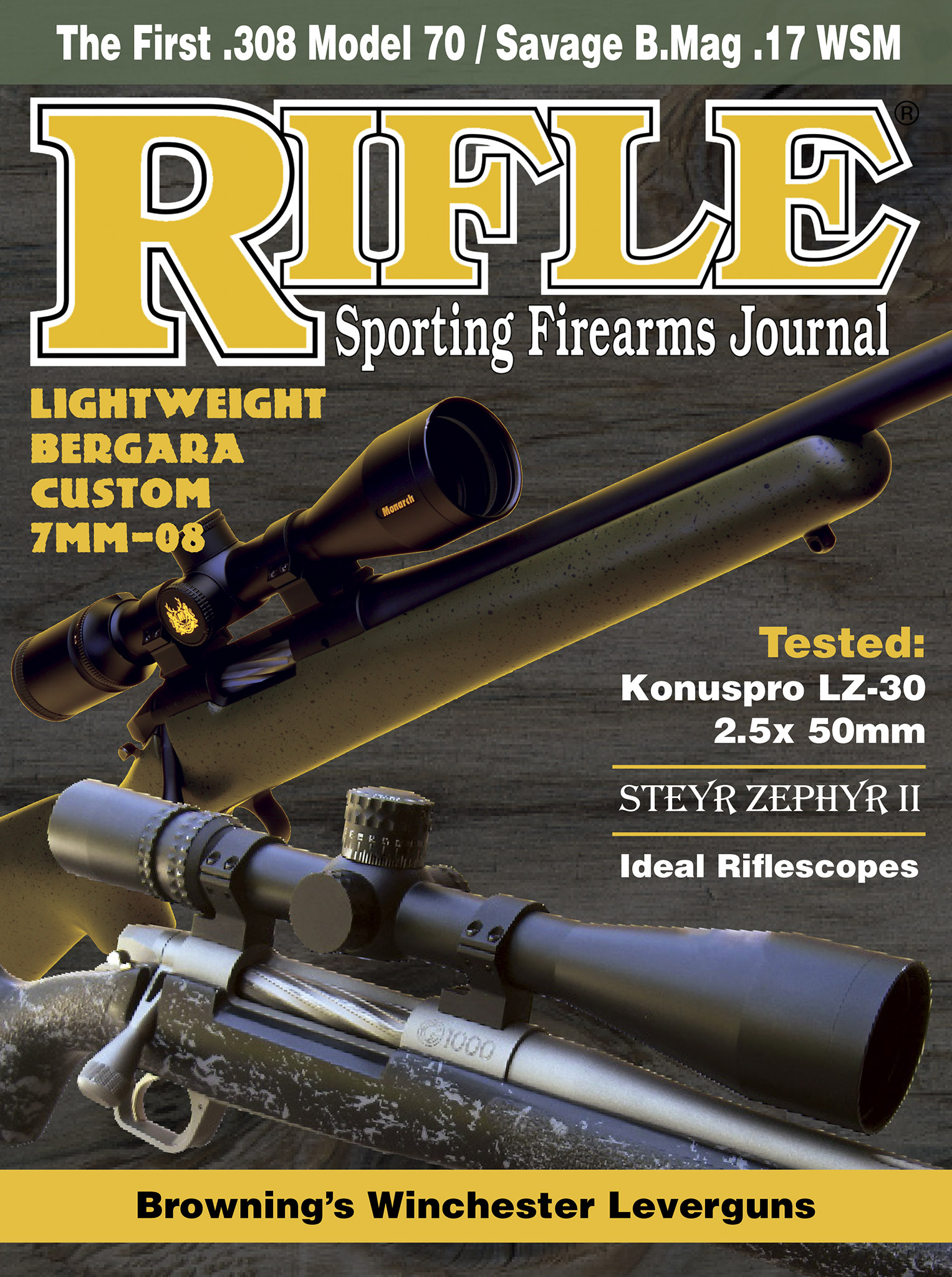Light Gunsmithing
Broken Stock Wrists
column By: Gil Sengel | November, 18
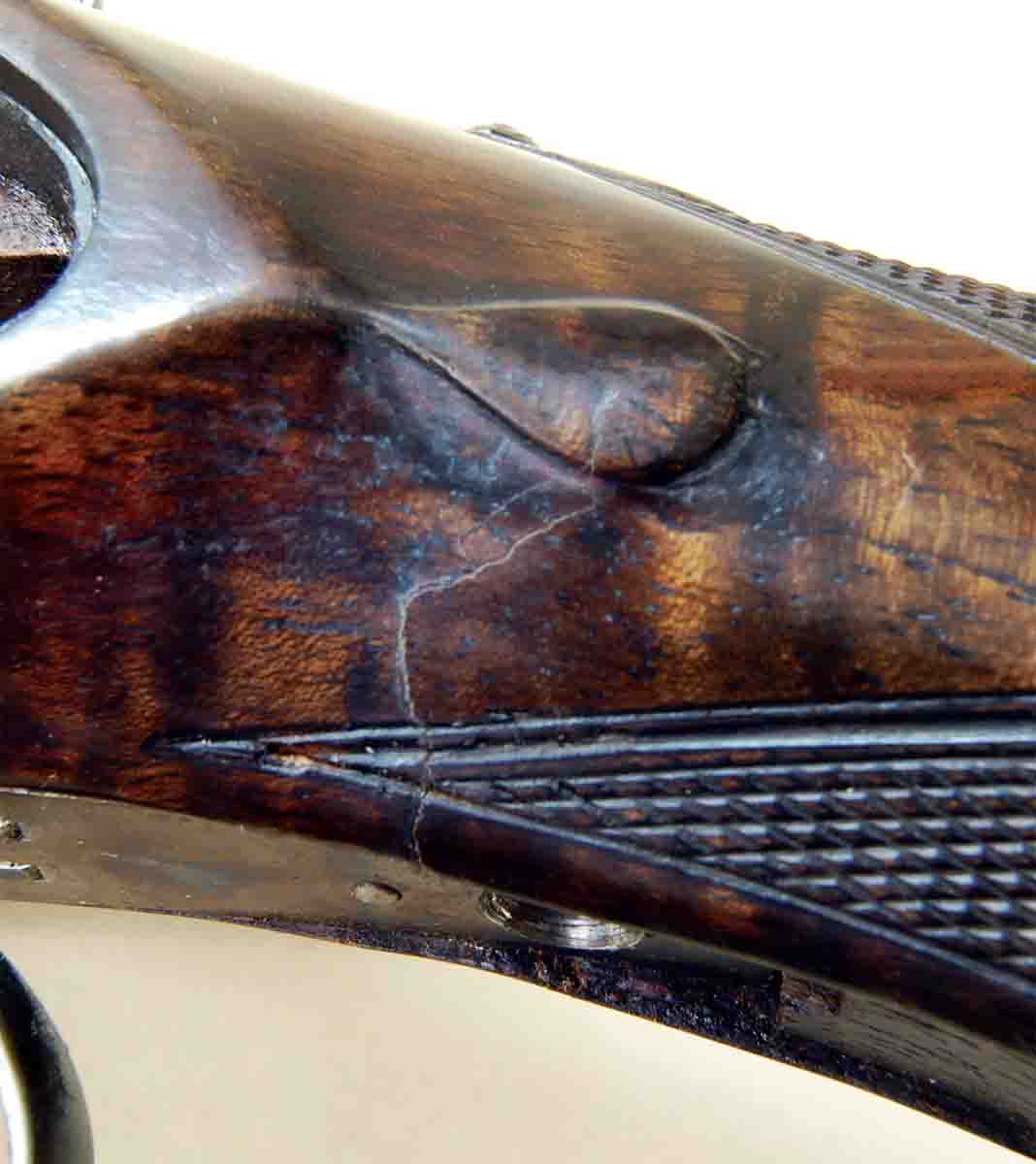
About 1940, Stevens Arms Co. offered its little 22RF/410 over/under and the No. 530-M side-by-side shotgun with stocks made of a type of plastic the company called Tenite. It was not affected by rain and would not swell, warp or crack in any climate, nor soften due to soaking up gun oil. Unfortunately, some cleaning solvents would dissolve Tenite, and it became brittle with age, leading to breakage of the hollow buttstocks. Savage/Stevens collectors today pay premiums for guns with undamaged Tenite stocks.
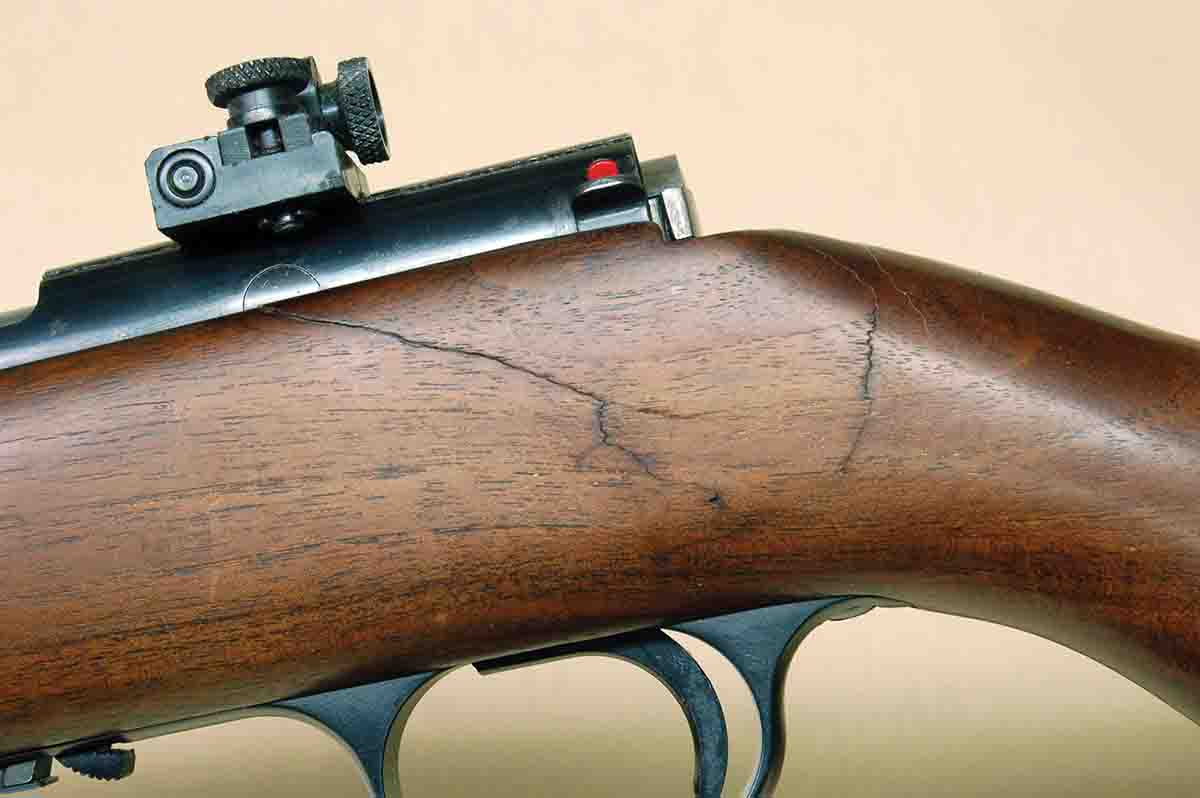
Modern hollow stocks are made of far different material. They are much tougher than Tenite but are not invincible. Every year, gunsmiths see pump and semiautomatic shotguns and a .22 Rimfire or two with stocks that are somewhat bent due to having been run over by a vehicle. How this could possibly happen is beyond me, but since it does nothing for customer relations to ask a guy how he managed to drive over his gun, we never ask. One-piece stocks on bolt guns and .22s can sometimes be bent back close to normal by the very careful use of an electric heat gun. Wood stocks can almost always be repaired, though they will not look pretty.
One area regarding damage where the plastic-stocked rifle has it all over the wood variety is wrist breakage. In fact, it’s probably impossible to break a plastic stock at the grip (except maybe by driving over it). Stocks made from trees, however, are broken at this point quite frequently.
When I use the term “broken” I do not mean broken into two pieces. Wood is a very fibrous and stringy material. It is incredibly strong and flexible when green but loses most of its flexibility as it dries. Thus, while still plenty strong for its intended purpose, if a stock is bent more than a very small amount, some of the wood fibers will break. This is unlikely in the part of the stock containing the barreled action, as the metal parts reinforce the wood, but the thinnest part of the grip is unsupported. This is why many double rifles and bolt guns made for hunting the remote areas of the globe between 1880 and 1930 had thick trigger guard tangs that extended to the grip cap, and heavy top tang extensions reaching back over the comb nose. Steel is stronger than wood.

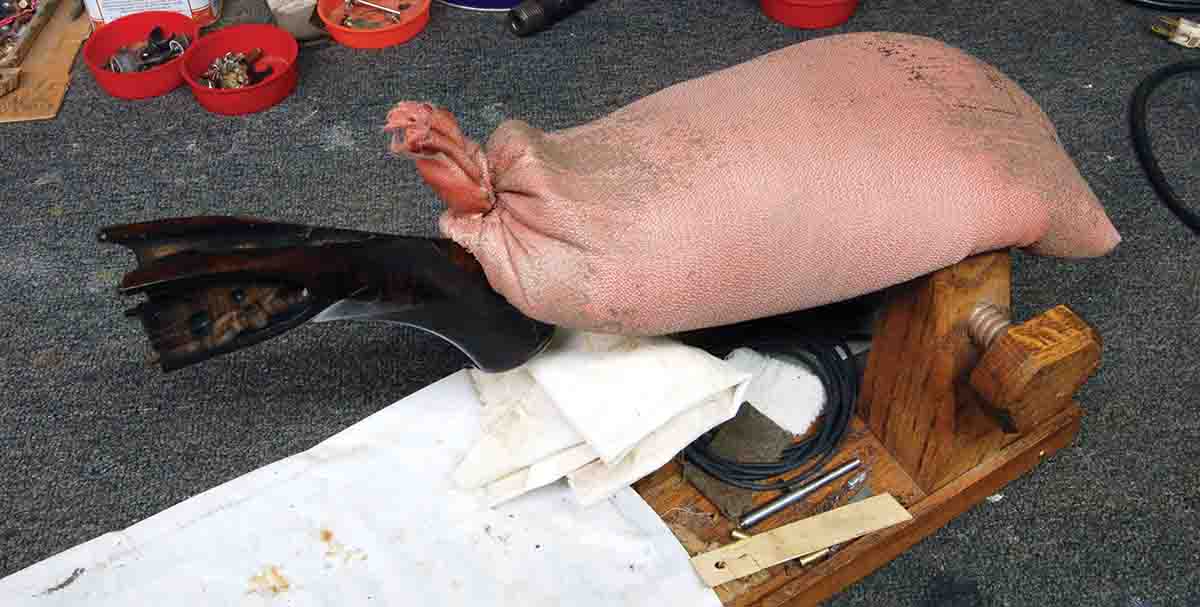
Of course, falls while hunting, where the gun winds up between the ground and its owner, will easily break a stock at the grip. Also common is someone either sitting or leaning on a cased gun that has been placed on a soft surface like a vehicle seat, bed or sofa. One fellow even admitted that while antelope hunting he came back to camp at noon and slid his Remington Model 700 into a green camouflage case and laid it on the seat of his pickup that just happened to have green camouflage seat covers. A while later it began to rain very hard. Yep, he jumped into the truck right on top of the rifle, breaking the stock at the wrist – and the scope as well. Good heavens!
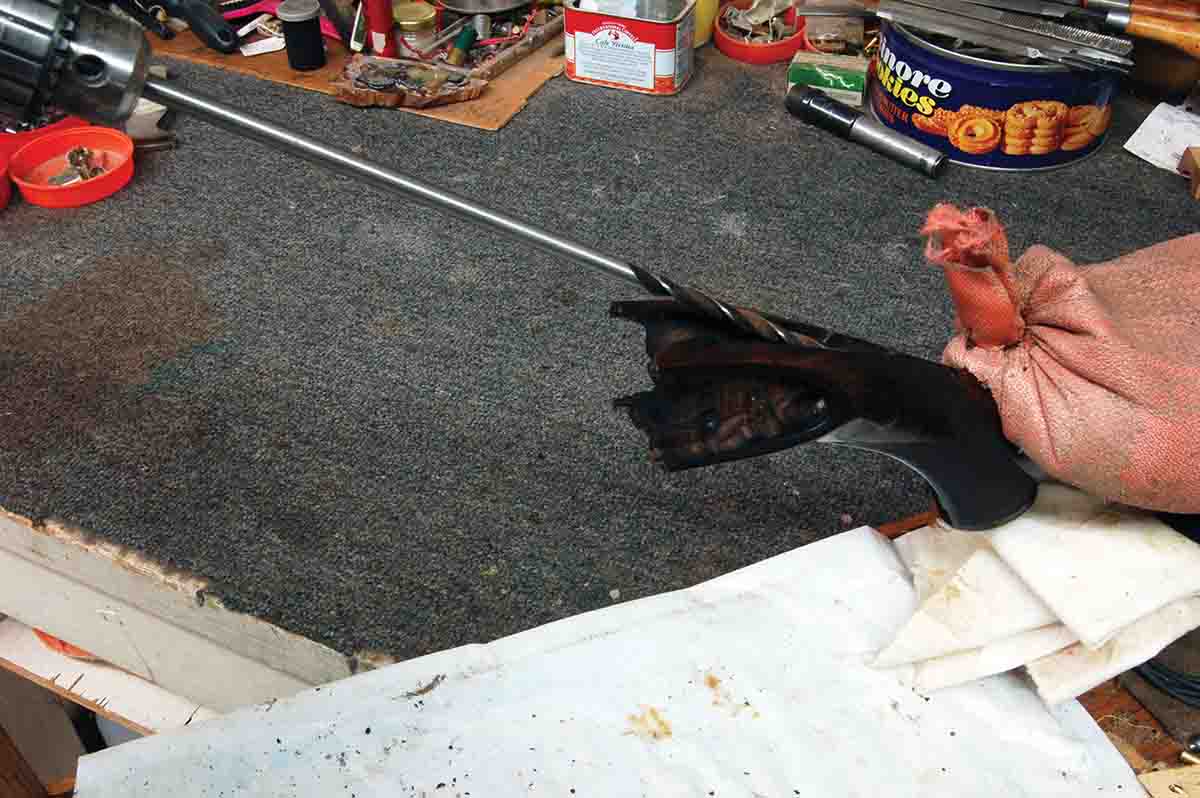
All such breaks in the thin part of the stock are very similar. In fact, they are not even called breaks; generally, “cracked at the wrist” is used. All that can be done is to clamp the stock in some manner so that it can be bent or twisted to open up the damaged area. A thinned epoxy like Brownells’ ACRAGLAS is then dropped onto the crack and forced downward by air pressure from a soda straw. Just touch the tip of the straw to the break and blow. Finish by clamping or wrapping the stock to force the break closed.
The foregoing is simple and straightforward. What I want to cover here is something that is an added part of such a repair. It was common in the early days of epoxies, but I have not seen it mentioned in years: Adding reinforcement to the grip after it has been repaired as well as possible. Reinforcement takes the form of a steel or hard (unbendable) aluminum rod inserted into the grip from the receiver cavity.
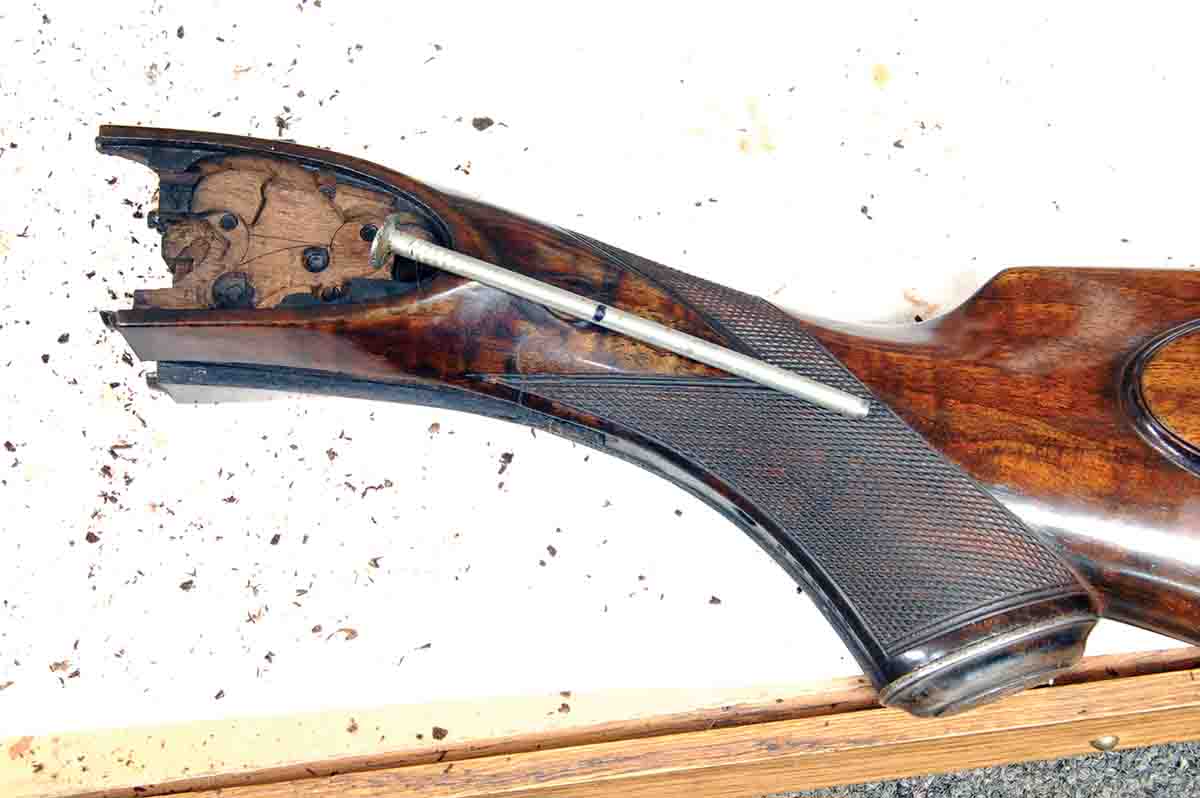
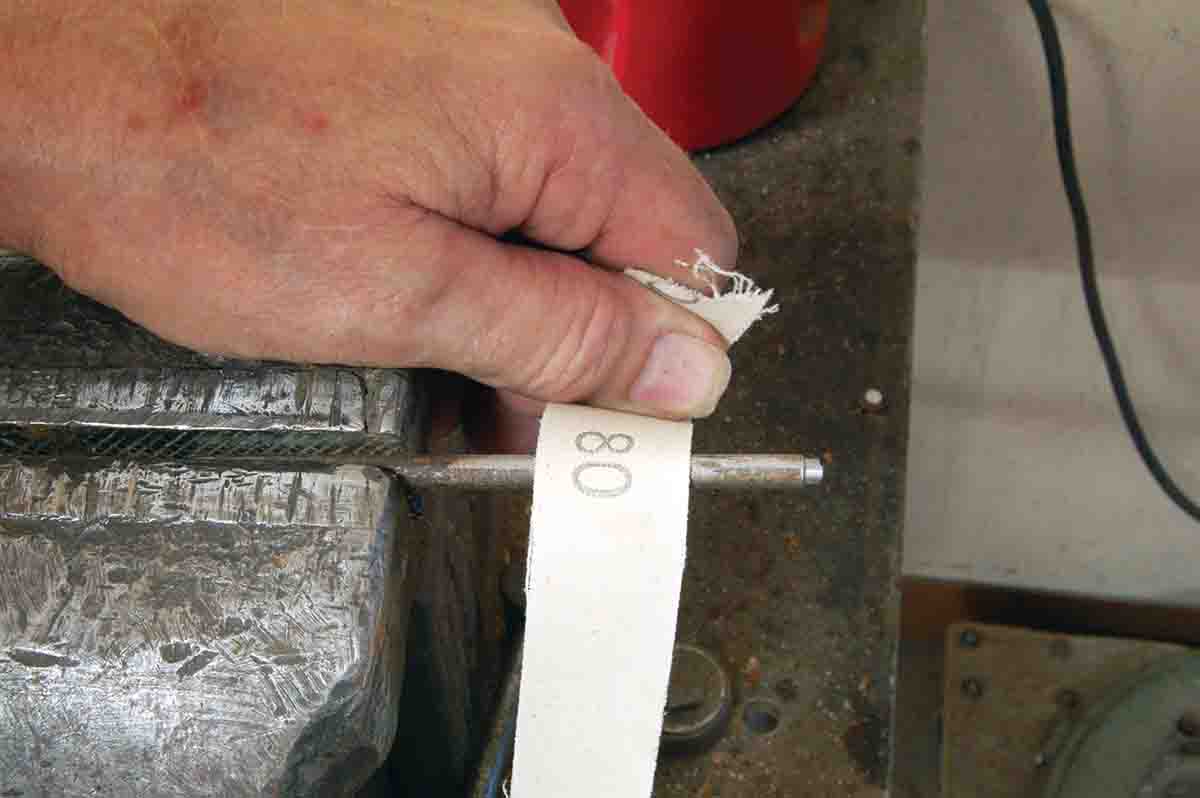
Given the situation, it was decided that the best way to create as much strength as possible in the broken area was to add a .375-inch diameter steel rod through the grip. Photos show the setup for clamping and weighting the stock down in such a manner that it absolutely cannot move while drilling. This is important as it prevents the drill from wandering off course. The drill bit must be longer than standard length to keep the drill motor away from the stock so the chuck does not chew into the wood. The one shown is 12 inches long. These are available from hobby woodshops.
The drilled hole’s depth will usually only be 3 to 4 inches. Nevertheless, it is necessary to keep checking alignment while drilling. Having the drill bit break through the side of the grip will definitely ruin anyone’s day!
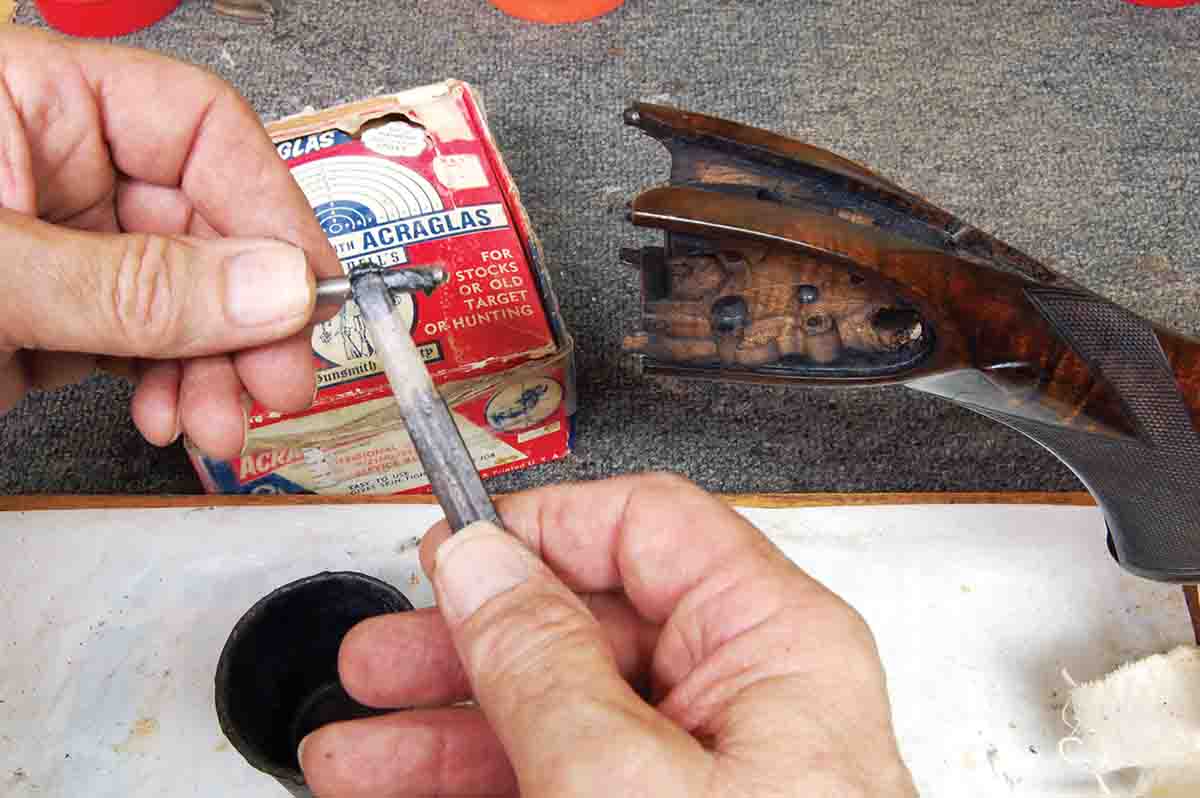
While this repair obviously does not apply to two-piece stocks in which the receiver is held to the stock by a longitudinal thru-bolt, it does have another application. This is reinforcing the thin grips of small-gauge shotguns before they are broken. Hard aluminum rods have been placed in several 28- and 20-gauge, straight-grip doubles over the years when they were restocked. In each case, the customer asked to have this done. Again, prevention is far better than any repair one can do.


